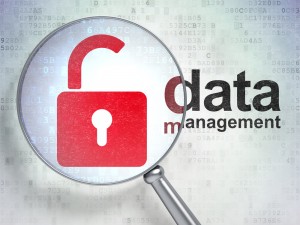
Featured Content

Data Warehouse Automation & Real-time Data – Reducing Time to Value in a Distributed Analytical Environment

Smart Infrastructure & Smart Applications for the Smart Business – Infrastructure & Application Performance Monitoring

Data Catalogs – Governing & Provisioning Data in a Data Driven Enterprise (16 October 2024, Stockholm)

Data Strategy: Building The Foundation of a Data-Driven Enterprise (13-14 November 2024, Italy Livestream Training)
Blog
Teradata Strengthens It’s Position in the BIG DATA Market
Today, my former employer (many moons ago – I left 17 years ago!) Teradata announced it is to acquire Aster Data effectively bolstering its position in the BIG DATA marketplace (See the announcement here). Aster Data has made its mark in the big data market with its well crafted integration of Hadoop Map/Reduce and the SQL query language allowing SQL developers to execute massively parallel Map/Reduce analytical functions on the Aster Data platform and leverage the power of Hadoop. Aster Data also has a IDE tool to make it easier for developers unfamiliar with Map/Reduce to generate Hadoop M/R applications (e.g. analytic functions) that can then be automatically deployed in a Aster Data nCluster database and invoked via SQL. Furthermore AsterData nCluster also supports both row AND column based storage. Of course Teradata already has a relationship with Hadoop vendor Cloudera to serve up data from Teradata to Map/Reduce applications running on Cloudera’s CDH platform. It is also working on interfacing Teradata with Cloudera’s Sqoop (part of the Cloudera Enterprise offering) to move data into HDFS via the Teradata Hadoop Connector.
Adding Aster Data to the mix means that Teradata now can potentially integrate with Hadoop deployments in both directions rather than one-way as with the Cloudera partnership. For example, organisations could access Hadoop (Cloudera’s CDH and other other offerings) from from analytical queries running SQL M/R on Aster Data nCluster or indeed I would assume in the future on the Teradata DBMS itself.
There is no question this is a good move for Teradata. It gives them columnar capability and also Aster Data has a rich library of pre-built map/reduce analytic functions to speed up M/R development and these functions can be invoked from SQL M/R on nCluster. I would have to assume that Teradata would also want to open the Aster Data IDE and the M/R functions up to Teradata developers to deploy these M/R functions inside of Teradata. That is a no brainer in my opinion. You would also have to say that this takes Teradata in-database analytics to a new level of depth opening up the door for more sophisticated analytic applications. While the Teradata/SAS partnership is a successful one but adding Aster Data will potentially give Teradata much more power in the in-database analytics area. This is an area that really matters in big data environments. It will also give them more to compete with against IBM whose acquisition of Netezza (particularly with its TwinFin iClass appliance) and SPSS has given IBM much more competitive muscle recently especially against Teradata and Oracle (Exadata). Besides competing with IBM, Aster Data will also give Teradata much more to compete with against Oracle’s Exadata. We will have to wait to see what HP does with Vertica.
In addition, with the Tsunami of sensor data coming over the horizon this acquisition will help Teradata move into the world of Sensor Data Analytics which, by the way, is a battle still to be fought for(see my blog on this from last year). Aster Data will help Teradata in accommodating the onslaught of data being generated by organisations increasing the instrumentation of their business operations with sensor networks. However in this space, adding a CEP vendor technology to the Teradata portfolio would be a good move as sensor data event correlations need to be acted upon BEFORE that event data is stored in a data warehouse. CEP, Active DW and SQL/MR. Hmm… now that is a combination worth having. It will be interesting to see what is offered across the family of Teradata Appliances and if Teradata decide to rollout nCluster on any of them. I would also think that Teradata will make sure they carefully protect the Aster Data customer base if they bring the DBMS technologies together gradually.
My only question is who will acquire Cloudera who have partnerships with BI platform vendors and other appliance vendors. That acquisition would pull the rug from under a lot of players.

Register for additional content
Register today for additional and exclusive content - informative research papers, product reviews, industry news.





